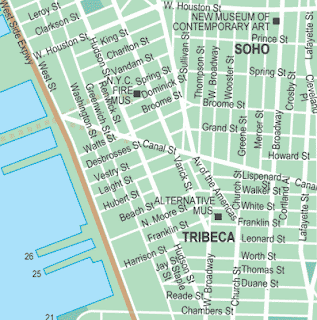Sadly, these cuts are to fall on organisations which have grown up under an enlightened view of the role of cultural activities in creating a setting for other ventures and investments. The Lower Ouseburn is a case in point. Following decades of dereliction and neglect – so-much-so few locals even realised where it was – the Lower Ouseburn attracted attention from artists and performers looking for an affordable base. It was ever thus; or, at least, since the turn of the century. Staithes on the Yorkshire coast, one of the most attractive fishing villages in the U.K. and a tourist magnet, was far from anything of the sort when Laura Knight went to live there. In her autobiography Knight describes a decrepit village terrorised by angry and suspicious drunks and incipient domestic violence. She and husband Harold were all but driven out. Similarly, other places now deemed idyllic were poverty traps which appealed to artists simply because they were cheap and no one else wanted to live in them.
Fast forward to the later twentieth century and suddenly the coffee bar and guitar culture takes off; Juliette Gréco makes the shapeless black sweater and 'Cleopatra' eye shadow de riguer and in no time everyone under thirty is dressing down like art students. Huge abandoned lofts in Lower Manhattan are taken over by the New York school culminating in Andy Warhol's (in)famous factory on Union Square near Greenwich Village.
 |
Juliette Gréco - post war café lifestyle personified |
 |
| Unlikely entrepreneur: Derek Jarman (1942-94) |
 |
London Docks warehouses in the last century. Abandoned by the 60s, these became studios and workshops until property developers moved in and the creatives were moved out |
Back in the States, artists and galleries moved on from 'The Village'. 'Tribeca' ('The TRIangle BElow CAnal street') was the once the home of meat packing amongst other operations and about as charmless as the industry it once supported. Quickly in the late 90s and early 00s it was a very 'hot' place to be and attracted widespread interest from artist's and 'culture vulture's' looking for cheaper rents. Actor Robert Di Nero was a seminal figure in this re-birth, helping to inaugurate the now internationally known Tribeca Film Festival amongst other ventures.
 |
| Tribeca, Manhattan, New York |
 |
The Tribeca Film Festival. A new and now very influential film festival based in what was the former meat packing district of Tribeca |
It was unfortunate to say the least that these facts were lost on the chief executive of a government quango I met at a gathering in Newcastle to discuss urban renewal on Tyneside a few years ago. When asked by me to comment on the contribution of the arts to urban renewal this well fed friend of Tony & Gordon gave me an abrupt dismissal. He turned away and began a much more agreeable conversation with a like-minded and suited figure from the world of corporate investment. Shops and offices not artists was the order of his day.
I will be covering the astonishing decline of the 'shops & offices' sector soon, but in short there are rows of closed posh retail outlets in the city matched only by unoccupied offices, some brand new.
I hold to my own view that the art's are not a career except for administrator's and a very, very, few practitioners. Most artist's and performer's subsidise themselves and some have found ways to practice without receiving much if anything from the arts gravy train. This is actually very much in accord with history; the idea of being a paid artist would have struck many a household name as pipe dreaming. But as long as there are a few who feel it's their 'right' to receive financial support the money men in suits will make the rules.




